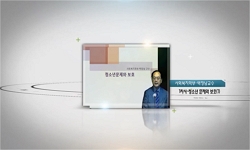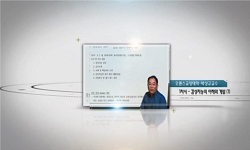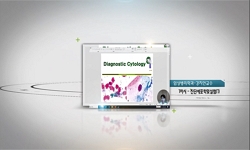The purpose of this research is to verify peoples in their 20s and older who work in Seoul. Exploded the influence of Person-environment Fit on innovative behavior, and see if Employee Engagement plays a mediating role, the purpose of checking whether...
http://chineseinput.net/에서 pinyin(병음)방식으로 중국어를 변환할 수 있습니다.
변환된 중국어를 복사하여 사용하시면 됩니다.
- 中文 을 입력하시려면 zhongwen을 입력하시고 space를누르시면됩니다.
- 北京 을 입력하시려면 beijing을 입력하시고 space를 누르시면 됩니다.
https://www.riss.kr/link?id=T15373211
- 저자
-
발행사항
서울 : 중앙대학교 글로벌인적자원개발대학원, 2019
-
학위논문사항
학위논문(석사) -- 중앙대학교 글로벌인적자원개발대학원 , 인적자원개발학과 , 2019. 8
-
발행연도
2019
-
작성언어
한국어
- 주제어
-
발행국(도시)
서울
-
기타서명
Person-environment fit with emotional intelligence and between about innovative behavior and employee engagement mediated moderation effect by emotional intelligence
-
형태사항
v, 91 p. : 삽화, 도표 ; 26 cm
-
일반주기명
중앙대학교 논문은 저작권에 의해 보호받습니다.
지도교수: 송해덕
참고문헌수록 -
UCI식별코드
I804:11052-000000230746
- DOI식별코드
- 소장기관
-
0
상세조회 -
0
다운로드
부가정보
다국어 초록 (Multilingual Abstract)
The purpose of this research is to verify peoples in their 20s and older who work in Seoul. Exploded the influence of Person-environment Fit on innovative behavior, and see if Employee Engagement plays a mediating role, the purpose of checking whether Employee Engagement plays a mediating role and verifying the control effect of the emotional intelligentsia on these indirect path effects. The research issues established based on these researched purposes are as follows:
First, does Person-environment Fit has to affected innovative behavior? Second, does emotional intelligence adjust as an adjustment effect in the relationship between personal-environment suitability and innovative behavior?
Third, does emotional intelligence adjust as an adjustment effect in relation to personal-environmental fit and employee engagement? Fourth, do personal-environmental fit affect innovative behavior by mediating Employee Engage- ment, and does it have a mediated effect according to emotional intelligence? To this moment, the research model was designed and investigated based on the relationship between the variables verified in the preceding researched. The researching survey was conducted online for about two weeks from May 1, 2019, to May 15, 2018, for 253 employees in their 20s and older who work at public and private companies in Seoul. Based on the collected data, the analysis was conducted by SPSS 23.0 and AMOS 23.0. The analysis results are as follows:
First, According to the analysis of the influence of Person-environment Fit on innovative behavior, the higher the Person-environment Fit was able to confirm that it played a role in raising the level in innovations. Second, after analyzing the influence of Person-environment Fit on personnel immersion, it was reached more the higher Person-environment Fit was more peremptory the influence of Employee Engagement. Third, after analyzing the effect of Employee Engagement on the innovative behavior, it was valid to raise Employee Engagement, the exceeding static(+) influence on the innovative behavior. Fourth, it was found that person-environment Fit directly influences Employee Engagement and indirectly affects Employee Engagement through Employee Engagement.
Fifth, Emotional intelligence is analyzed to have a controlled effect between person-environment Fit and innovative behavior. Sixth, it has been confirmed that emotional intelligence is controlled as a switch in the relationship between person-environment fit and Employee Engagement. Seventh, after analyzing the mediated effects of Employee Engagement in relation to the person-environment fit and innovative behavior, it was found that person-environment fit had a direct exceeding static(+) on Employee Engagement and indirectly affected the effect of controlling person-environment fit and staff immersion to increase emotional intelligence.
Basically, on this research, those implications the research mentioned above exist that human personalities, organizations, individuals, and functions are more suitable and that person-environment Fit increases, the level about innovation behavior increases, beginning to advancement in levels of innovation behavior.
Concerning the results of the research, each company presented practical measures to enhance the level of emotional intelligence and suitability of the human personalities and Person-environment to enhance the employees' innovative behavior and Employee Engagement in the organizations.
국문 초록 (Abstract)
이 연구의 목적은 서울에서 근무하고 있는 20대 이상의 직장인들을 대상으로 개인-환경적합성이 혁신행동에 미치는 관계에 있어서 직원 몰입이 매개역할을 하는지 분석해보고 이러한 간접...
이 연구의 목적은 서울에서 근무하고 있는 20대 이상의 직장인들을 대상으로 개인-환경적합성이 혁신행동에 미치는 관계에 있어서 직원 몰입이 매개역할을 하는지 분석해보고 이러한 간접경로 효과에 대해 정서지능의 조절효과를 검증하고자 하였다. 이를 통해 대상자들의 소속된 조직의 상황 속에서 정서지능이 개인-환경적합성과 직원몰입의 영향을 미칠지에 대한 검증을 해보고 결과에 대한 시사점을 제공하고자 하였다.
이와 같은 연구 목적을 토대로 하여 설계한 연구문제는 다음과 같다. 첫째, 개인-환경적합성은 혁신행동에 유의미한 영향을 미치는가? 둘째, 정서지능은 개인- 환경 적합성과 혁신행동의 영향관계에서 조절효과로써 조절하는가? 셋째, 정서지능은 개인-환경적합성과 직원몰입의 관계에서 조절 효과로써 조절하는가? 넷째, 개인-환경적합성이 직원몰입을 매개하여 혁신행동에 미치는 영향에 있어 정서지능에 따라 매개된 조절효과를 보이는가? 이를 위해 선행연구에서 검증된 변인 간의 관계를 바탕으로 연구모형을 설계 후 설문을 진행하였다. 설문은 서울에 공/민간 기업에 근무하고 있는 20대 이상의 직장인들 253명을 대상으로 2019년 5월 1일부터 2019년 5월15일 까지 약 2주간 온라인 설문을 통해 실시하였다. 수집된 자료를 바탕으로 SPSS 23.0과 AMOS 23.0을 활용하여 분석을 진행하였다. 분석결과는 다음과 같다.
첫째, 개인-환경적합성은 혁신행동에 정(+)적으로 유의미한 영향으로 분석되어, 개인과 환경의 적합도가 높을수록 직원 몰입의 수준도 함께 증가 하는 것을 확인할 수 있었다. 둘째, 개인-환경적합성과 혁신행동 사이의 관계를 분석한 결과 개인과 환경의 적합도가 높을수록 혁신행동의 수준이 상승하는 것을 확인 할 수 있다. 셋째, 직원몰입과 혁신행동 사이에는 긍정적인 정(+)의 유의한 영향을 미치는 것으로 확인 되었다. 넷째, 개인-환경적합성은 직원몰입을 통하여 혁신행동에 간접효과를 나타내는 것으로 확인되었다. 다섯째, 정서지능은 개인-환경적합성과 혁신행동 사이에서 조절효과가 나타나는 것으로 분석되었다. 여섯째, 정서지능은 개인-환경적합성과 직원몰입의 관계에서 조절변인으로써 조절하는 것으로 확인 되었다. 일곱째, 개인-환경적합성과 혁신행동 관계에서 직원몰입의 매개효과를 분석한 결과 개인-환경적합성이 직원몰입에 직접적인 정(+)의 영향을 미치며 직원몰입을 통해 간접적으로도 영향을 미치는 것으로 나타났으며, 개인-환경적합성과 직원몰입을 조절하여 증가시키는 변인으로 정서지능의 조절효과를 확인하였다.
이러한 연구 바탕으로 본 연구의 시사점은 개인과 조직, 개인과 직무가 적합할수록 조직에서의 혁신행동수준이 증가하고, 또한, 개인-환경적합성이 증가할수록 직원몰입수준의 상승으로 혁신행동 수준의 향상으로 이어지게 된다. 연구 결과를 참고하여 각 기업에서는 조직에서의 직원들의 혁신행동과 직원몰입을 높이기 위하여 정서지능을 높이는 방법과 개인과 개인에 처해진 환경과의 적합정도를 높이기 위해 적극적으로 노력 할 필요가 있으며, 마지막으로 기업의 근무하고 있는 직원들의 직원 몰입과 혁신행동 강화를 위해 실천적 방안을 제시하였다.
목차 (Table of Contents)
- Ⅰ. 서 론 1
- A. 연구 필요성 및 목적 1
- B. 연구문제 6
- C. 용어의 정의 7
- Ⅱ. 이론적 배경 8
- Ⅰ. 서 론 1
- A. 연구 필요성 및 목적 1
- B. 연구문제 6
- C. 용어의 정의 7
- Ⅱ. 이론적 배경 8
- A. 개인-환경적합성 8
- B. 혁신행동 14
- C. 직원몰입 19
- D. 정서지능 25
- E. 변인 간 상관관계 30
- Ⅲ. 연구방법 36
- A. 연구모형 및 가설 36
- B. 연구대상 37
- C. 측정도구 40
- D. 측정도구의 신뢰도 및 타당도 평가 44
- E. 자료 분석 방법 47
- Ⅳ. 연구결과 50
- A. 연구변인의 기술통계 분석결과 50
- B. 변인 간 영향관계 51
- C. 조절효과, 매개효과 및 매개된 조절효과 분석 결과 53
- D. 가설 검증 요약 59
- Ⅴ. 결 론 60
- A. 요약 60
- B. 논의 및 결론 62
- C. 제언 66
- 참고문헌 68
- 부 록 82
- 국문초록 87
- Abstract 89












